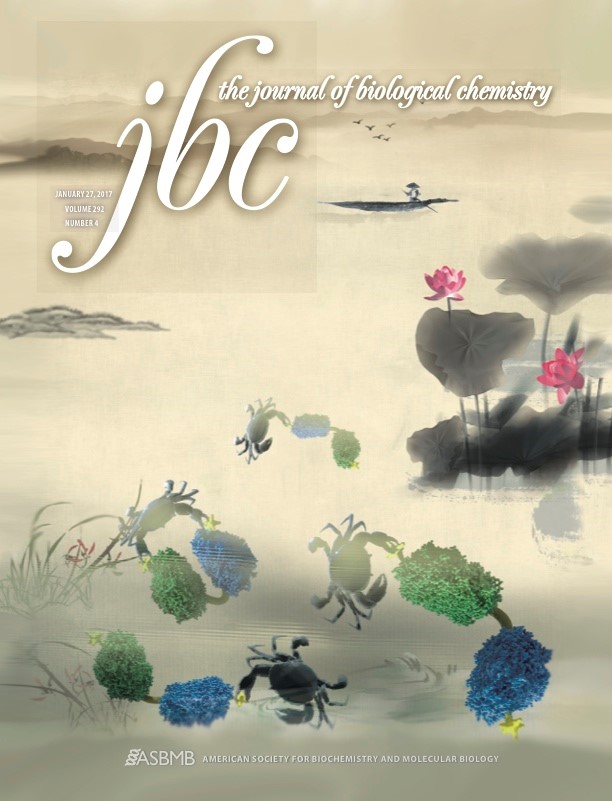Research News
Jan. 27, 2017 – Dr. Meng-Qiu Dong and collaborators developed a new method to study protein dynamics based on chemical cross-linking, mass spec analysis and structure modeling
Jan. 27, 2017 – Dr. Dong Meng-Qiu of NIBS, Beijing and collaborators from Wuhan Institute of Physics and Mathematics, Chinese Academy of Sciences (WIPM, CAS) published a research article entitled “Modeling protein excited-state structures from "over-length" chemical cross-links” in The Journal of Biological Chemistry (doi: 10.1074/jbc.M116.761841). The accompanying artwork decorates the cover of the JBC issue in which the article is published.
Present-day structural biology largely focuses on the predominant ground-state structures of proteins, which are most populated and readily detectable. However, to perform its function, a protein must inter-convert between its ground state and the excited state. Despite technical advances in X-ray crystallography and cryo-electron microscopy, the excited states of proteins remain difficult to characterize. Nuclear magnetic resonance (NMR) spectroscopy is able to capture the excited states and elucidate protein dynamics, but it requires a large quantity of purified, isotopically labeled protein, and is limited to proteins of less than 50 kDa.
In recent years, chemical cross-linking of proteins coupled with mass spectrometry (CXMS) has seen rapid technological advancement and soaring popularity in structural biology. There are many examples in which CXMS has facilitated elucidating the structures of protein complexes. However, experimentally identified cross-links are sometimes incompatible with the known structure of a protein, that is, the distance calculated between two cross-linked residues sometimes exceeds the maximum length of the cross-linker. The discrepancies may persist even after the elimination of potentially false cross-links and inter-molecular cross-links. In this study, the authors demonstrate that high-confidence over-length cross-links arise from alternative excited-state conformation of a protein—in other words, they contain valuable information about protein dynamics. The authors present a workflow to characterize protein dynamics based on CXMS data, the key components of which include identification of high-confidence intra-molecular cross-links from CXMS analysis of a 1:1 mixture of the 14N- and 15N-labeled protein and a specialized software tool DynaXL (http://www.tanglab.org/resoures/DynaXL) for modeling ensemble structures of a multi-domain protein. The CXMS-DynaXL method is highly sensitive to lowly populated conformational states of a protein, and is not limited by protein size.
Yue-He Ding of NIBS and Zhou Gong of WIPM are co-first authors of this article. Meng-Qiu Dong and Chun Tang (WIPM) are the corresponding authors. Other contributors include Xu Dong and Kan Liu from WIPM, Zhu Liu from Zhejiang University, Si-Min He and Chao Liu from Institute of Computing Technology, CAS. The authors thank the Chinese Ministry of Science and Technology, National Natural Science Foundation of China, Howard Hughes Medical Institute, and the municipal government of Beijing for funding support.

Explanation of the cover artwork: Proteins dynamically interconvert among multiple conformations when fulfilling their functions. Manifested as “over-length” cross-links, the alternative, excited-state structures can be captured and visualized, as demonstrated in our paper. The crabs herein refer to the cross-linking reagents used, green and blue aquatic preys refer to the different domains in a multidomain protein, and the yellow stars refer to the reactive side chains in the protein. The crab can only clutch both stars when the prey is in a compact form. For details see the article by Ding et al..



